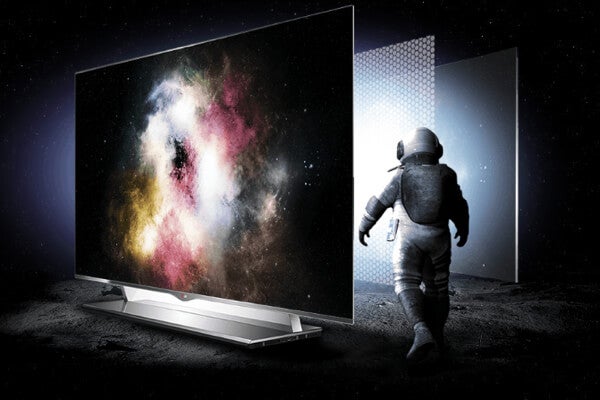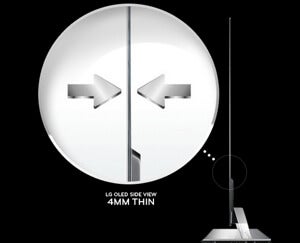
To kick off 2013, South Korean electronics firm LG launched the world’s first commercially available 55” OLED (organic light-emitting diode) television. And according to LG, it’s “as thin as three credit cards.” Which is both jaw dropping and an entirely appropriate unit of measurement. If you want thin, expect to pay. The model’s $12,000 US price tag will have you handing over those credit cards in short order.
LG first showed off their OLED masterwork at Consumer Electronics Show (CES) 2012. A year on and it’s officially available in South Korea, to follow in the US come March. The television’s OLED display is but 4mm thick and renders beautiful colors using their four pixel color method (red, green, blue, and a white sub-pixel). OLED screens offer insanely fast refresh rates and can also turn off individual pixels to yield “infinite” contrast ratio and save energy.

LG’s may be the first, but it won’t be the last. Sony unveiled an OLED television (with a few glitches) at CES 2013. And true to flexible phone form, Samsung announced one of their 2013 OLED television offerings will feature a curved screen for a more immersive experience. (OLEDs can be printed on a plastic substrate (instead of glass) allowing flexibility.)
So far, OLEDs have only been employed in smartphones—the Samsung Galaxy, for example. Why only mobile? There are technical hurdles to making bigger OLED screens. Samsung, the widely acknowledged leader in OLED, is said to be still seeking to perfect their product prior to launch.
But this story isn’t about the television; it’s about the technology. Consider what the last big advance in displays meant. Touch screens enabled elegant pocket sized devices like the iPhone—and a few short years on we can do more with one device than we’d imagined possible. It matters what information technology can do in an absolute sense—but equally important is how, where, and when users can interact with it.
OLED technology has many dreaming of energy efficient, fully flexible, tough, paper thin displays—worn around your wrist or spread across a table and rolled or folded up into a brief case afterwards. To get there, we’ll need flexible components to match flexible displays, perhaps made of graphene.
Notably, however, the promise of flexible OLED technology has been a regularly recurring theme in the last several years, with manufacturers repeatedly overpromising on launch. The first OLED televisions were due out last year. Ditto with Samsung’s flexible OLED smart phone.
Further, while the thinnest television on the market makes LG’s OLED offering compelling, it may not yet be worth the price. Superior picture quality and refresh speed in LG’s OLED displays are only as useful as the content they’re displaying—and as yet not even films in Blu-Ray do OLED displays justice.
Achieving the full promise of OLEDs is yet a few years down the road. In the meantime, we’ll have to be satisfied with the fact electronics manufacturers continue to advance the technology and send products to market.



